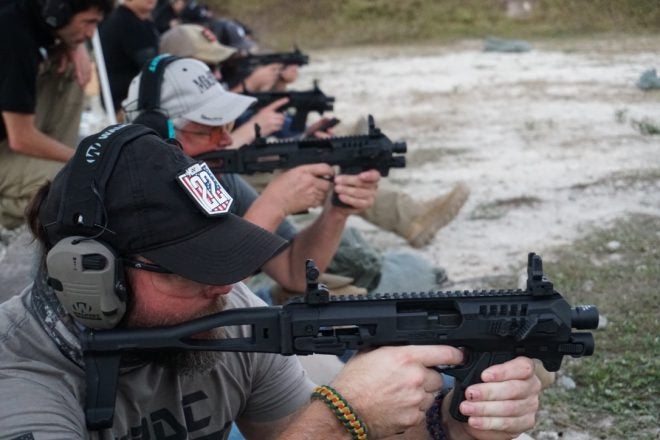There was definitely a lot of lively discussion on my teaser article for the very first course put on by the makers of the RONI line of “Glockerbine” conversions.
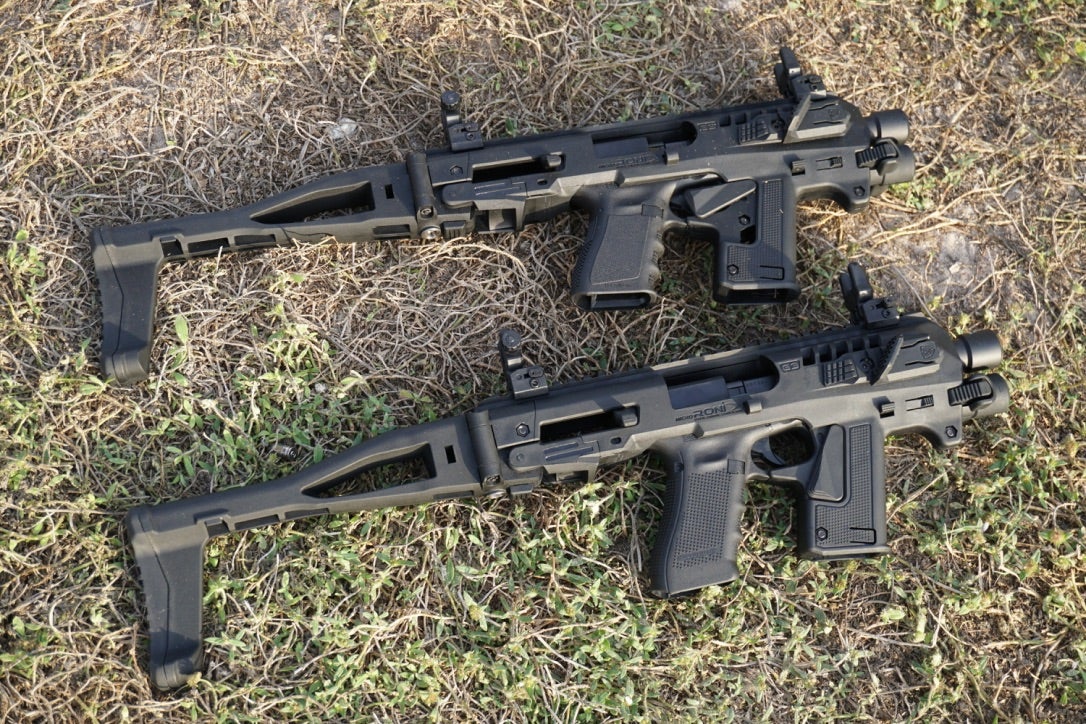
Micro RONIs
I would like to consider myself a lifelong student. I certainly don’t know everything, and I hold the belief that you can learn something from everyone–you just have to let your ego go and try it out. This course was no different, and had an amazing carrot. How often do you get the chance to take a class taught by someone that “wrote the book” on the subject? Having a course in shooting taught by Lt Col (ret) Mikey Hartman is like being taught special operations by Col Beckwith.
Background
Don’t get me wrong, I’m definitely American. A lot of tax money was spent on training to prepare me (and all of the Marines and other Corpsman I deployed with) to go play in someone else’s backyard for a few glorious months. And that training was nothing short of amazing. But I have (and had) no illusions that it was the “only” way to conduct business. It was just the way we did it. The IDF has a different way. Not better. Not worse.
You also need to understand some important context. We have a huge disciplined military (we can debate that in the comments… :)). It is also volunteer and a mere fraction of our population. And when we deploy our military, it is to someone else’s backyard.
Israel, by contrast has an entire population of about 8 million, and every citizen is required to serve, men and women (with very few exceptions). For them it is a huge percent of their population. And they are fighting a near constant war in their own backyard.
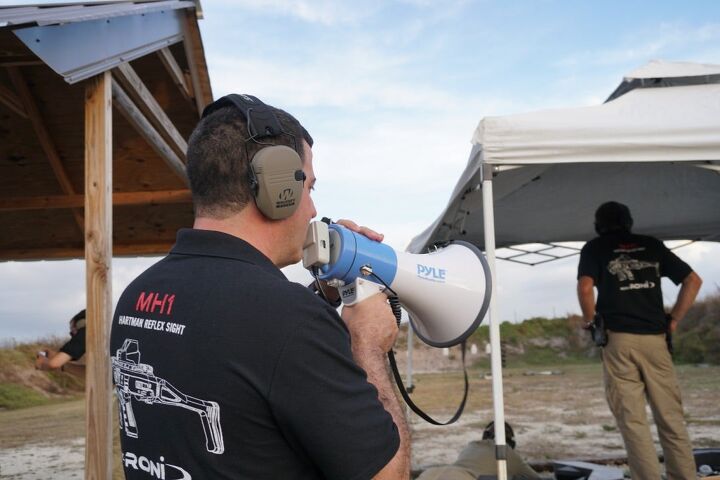
Ah, yes, the dreaded bullhorn…
When we make changes to our training and our tactics and strategies, it is not with much speed (excepting certain groups). We generally have the leisure to do so since the pressure is all of our own making. The IDF has to adapt much more quickly, and things that don’t work are not only rapidly changed, but the fixes rapidly implemented. Both have strengths and weaknesses and both are equally valid.
One of the comments in the earlier article discussed the inflated perceptual “mystique” of the IDF. I think this is nothing more than the “it is foreign and different therefore it is more interesting” diatribe. A little secret here–they also have inflated perceptual “mystique” of our military, especially our discipline.
Neither doctrine is right or wrong. They are just different, and are tested and vetted in the context they are used.
The Course
Train the Trainer was a course in how to teach the basics of shooting how they teach in the IDF. They have rules (they call them “laws”) that govern the basic principles of shooting very similar to what we do. They have stances and grips and ways you manage the trigger and ways to clear malfunctions (“stoppages”). Most of the material is taught with an economy of motion and thought. There are standards of training, and those standards have to be met. Sounds familiar doesn’t it.
Students in this course were all media (a variety of publishing formats) and industry people, from all manner of backgrounds (from retired SF to technical advisers/weapon handlers for film to podcasters and YouTubers).
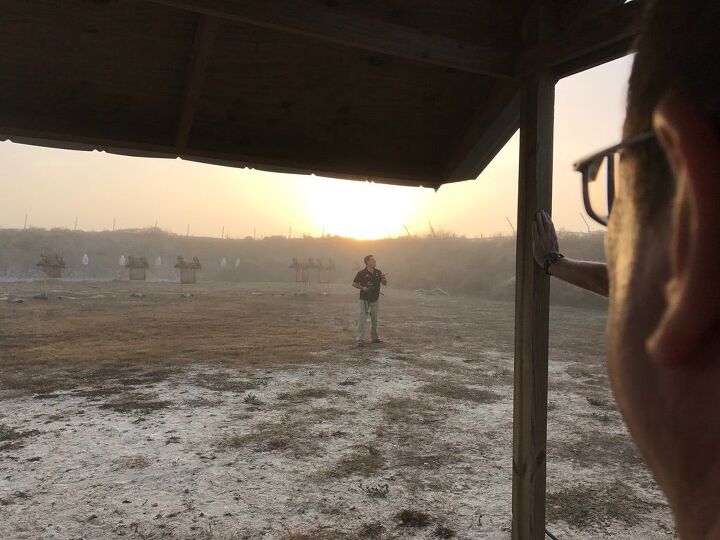
Long full days of excellent training.
I went to the course with the goal of walking away with something I didn’t know before as well as expanding my borders, and I can happily report that this was achieved.
The two and half days of training at the amazing Altair Training Solutions facility in south Florida started at 6:30am and ran until 8:30pm with very little break time (basically meals). Blocks of instruction in the classroom were efficient and chock full of information. We were put in small groups (of four students) and assigned an instructor that stayed with us the whole course. While the days were long, they flowed very well, and it never really felt like a “grind”. There were no lulls in the action waiting for things to get setup or “huddles” from the cadre trying to figure out what was happening.
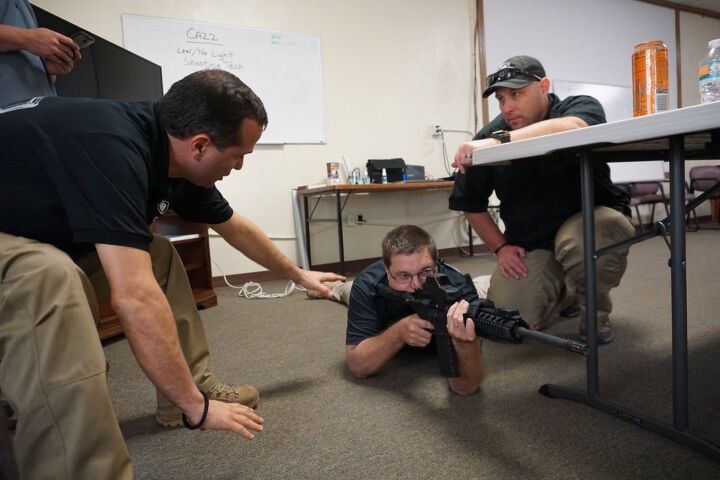
Basics of the prone shooting position.
My group had Hayim (who you can see in a number of the CAA AK videos). He was a very patient instructor, and cultivated, in my “humble” opinion, the best group of the course… :). I’m not at all biased.
I would also like to point out that there was not any instruction of this crazy “mythos” of IDF techniques. We never did anything in Condition 3 (and really very few IDF are issued pistols). We never did any “chicken winging”. These things are just not part of any core shooting doctrine.
Here is a highlights video put out by the TacDaddy:
Day 1
The first half of the first day was taken up with introductions, history and familiarization with the weapons and sights. We were also given the basics of the shooting style and positioning we would be using, from standing all the way through prone.
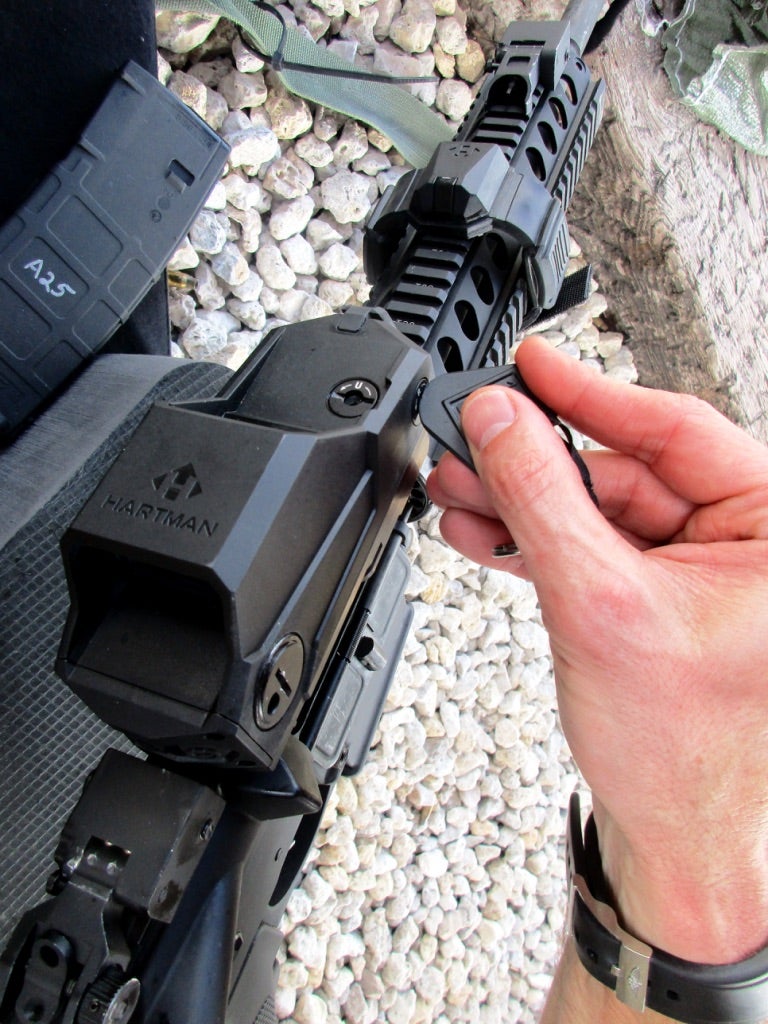
Zeroing the Hartman MH1 sight
After lunch we went to a private range and got our first hands on with the equipment. First task was zeroing weapons and getting hands on with the RONI variants and the AR-15 with the MH1 sight.
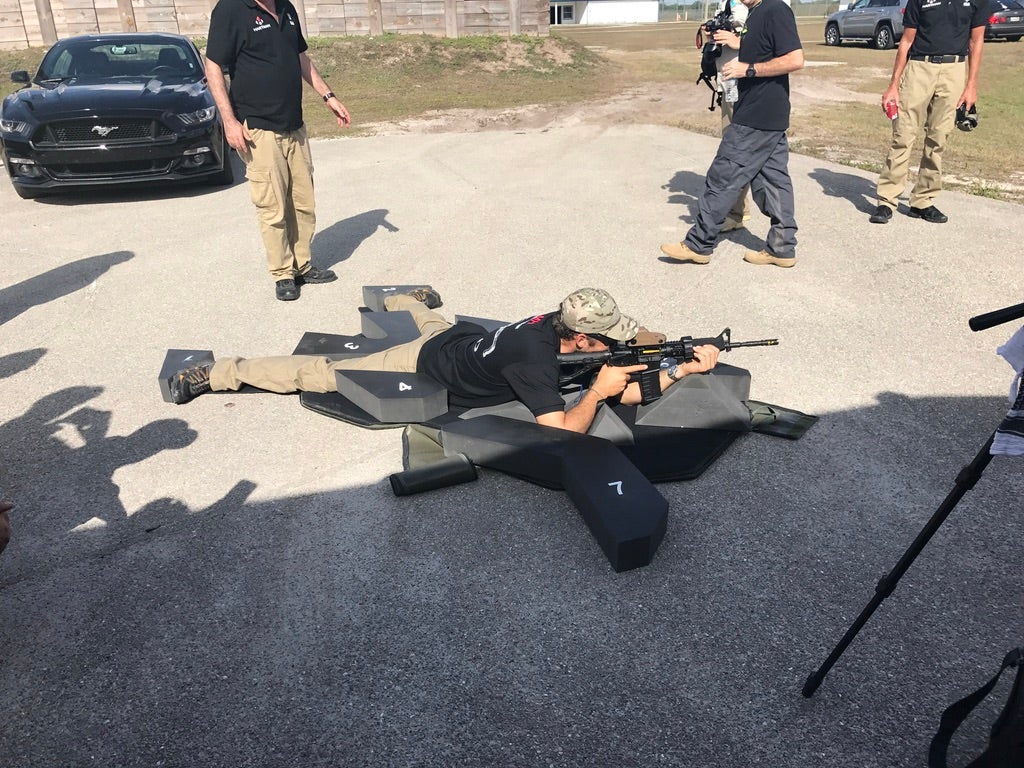
ZUES Shooting Mat
We started with shooting from prone using a pretty neat idea that rapidly helps learn the position. The IDF teaches prone shooting from an angle, basically 45 degrees to the weapon (we can discuss the pros and cons in the comments). They developed a shooting mat called the ZUES (Zero Under Eighty Seconds) that interfaces with foam block attached via hook and loop. Once you get into the basic position, the blocks are placed according to your position, to help you get some “muscle memory” for the placement of your body, and give you some tactile feedback (I’m going to do a more detailed post in the next few days on it).
We capped off the training with a night shoot, and friendly competition.
Day 2
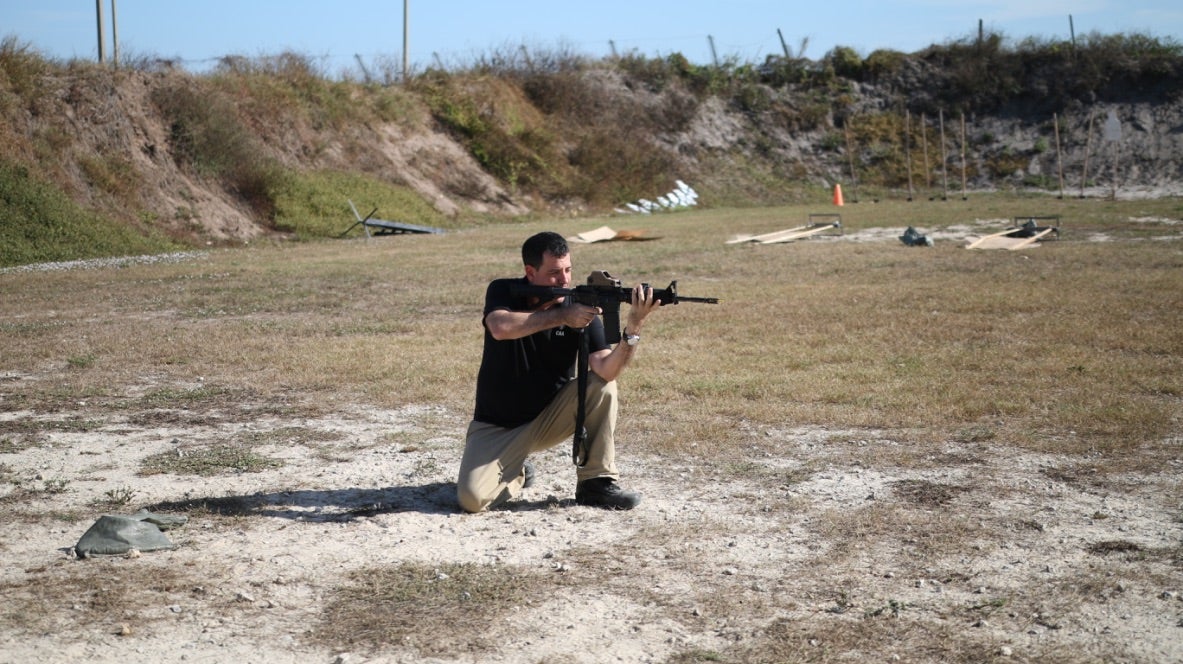
Mikey Hartman demonstrating the kneeling position.
The second day was primarily around dry fire training (of which I am a huge proponent), and shooting from standing, kneeling and sitting. We also worked on engagement of multiple targets at multiple distances.
After lunch we worked on stoppage drills, and again had some friendly competitions. There was also an emphasis on pressure shooting which was fun and helpful. We all had a numerical position on the line, and Mikey would first call out a number and a drill. Something like “2 rounds standing on close target, 2 rounds prone on far target. Number 6, go!”. There were generally time pressures. Then after we started getting cocky, he’d turn them in to math problems: “3 rounds kneeling on close target. 18 divided by 3, go!”
Day 3
Again we started on the range, but this time split into 2 groups. One group went to the shoot house with Garret and Aaron using the AR-15s. The other group stayed on the berm to do a comparative shoot between the “naked” Glock and the RONI out at 35 yards, and then learn the IDF “charging” method for rapidly approaching an enemy position, to say break an ambush (kind of similar to our “immediate action” drills but with a much longer skirmish line). After a couple of hours we switched and went to the other station.
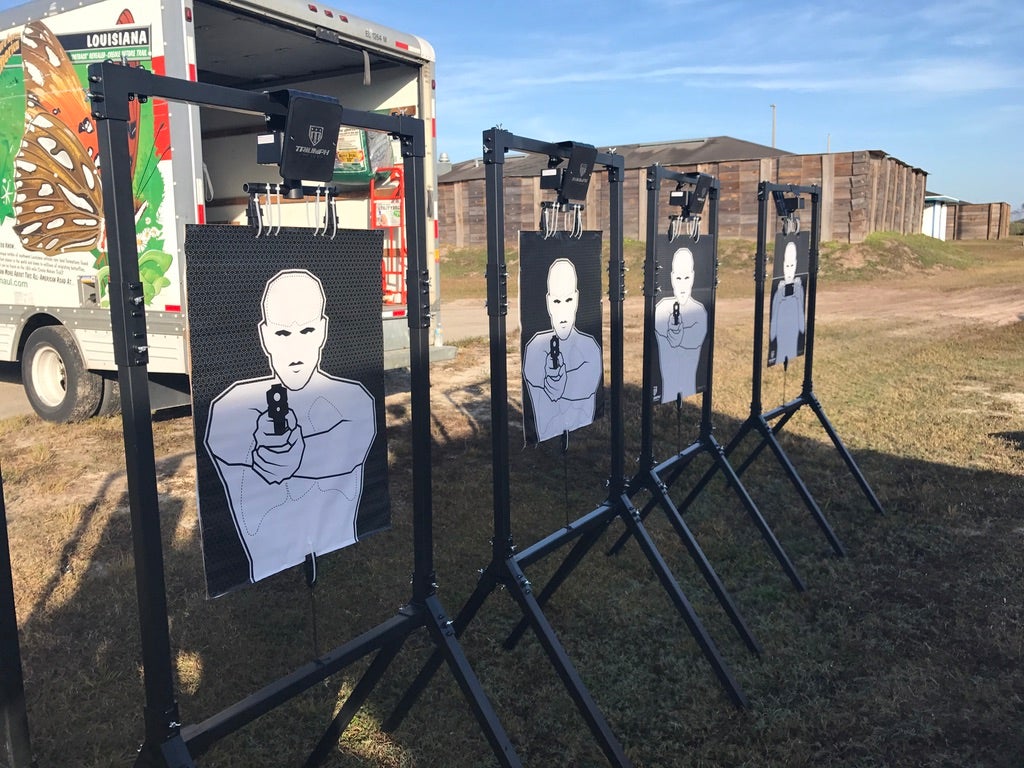
Triumph’s Shoot/No-Shoot targets
Triumph Systems provided active shoot/no-shoot targets and paint packs for both events.
The CQB/Shoot house was very different from how I was taught, especially with respect to clearing doorways. The actual exercise was a lot of fun, and over much too quickly. I’m not going to go into too much detail for “reasons”; take the class if you are interested in playing.
During the comparative shooting I can attest the RONI allows for much more accuracy, hands down. I attribute a lot of that to the longer sight radius and ability to shoulder it–you are not really gaining appreciable or useful “barrel” length. We did have some studs in class that shot the Glock as well as the RONI, my partner Larry being one (scoring perfect with both).
Charging was fun with no one shooting back. It was akin to a Viking charge, but with guns and a whole ton of suppressive fire and splattering paint packs. Eran did a demonstration, full on crazy fast, and ended up covered with (including a mouthful) green goo. I’m not sure it is a style I will adopt, but it was an interesting glimpse into a different style.
Great instruction all the way around.
Conclusions
As I mentioned before, there is something to be learned from everyone, and from any training you attend. It may not be what you intended for it to be, and it may exceed your expectation. I have personally been to a number of “first runs”, and, in general, they are a hot mess if the organization putting them on isn’t coordinated. Which happens all too frequently.
CAA’s Train the Trainer was not one of those. It was very well run for a first time class, with cadre teaching in a foreign place, with the logistical timelines they had to meet. Sure there were a couple of minor hiccups, but they were professionally handled and dealt with quickly.
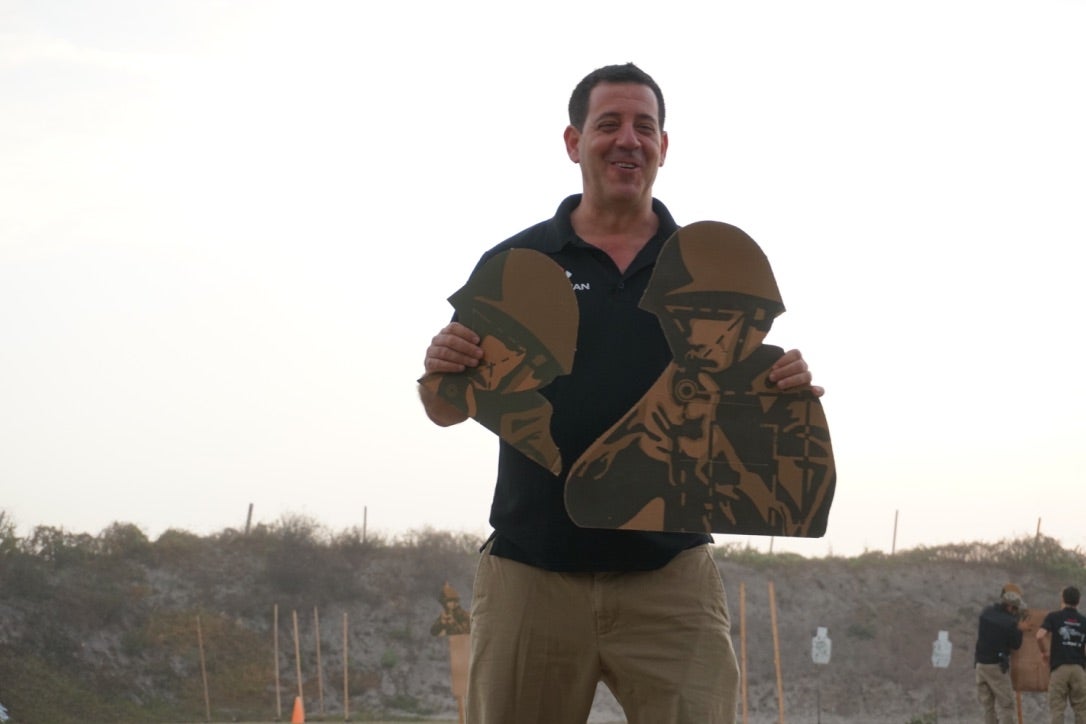
I don’t think Mikey Hartman ever stopped smiling.
Mikey Hartman is one of the most engaging firearms instructors I’ve had. He worked us like mules during the class, but he has a super infectious positive attitude. He took personal interest in every single student in the class and had specific comments, corrections and encouragements for each of us, tailored to how we were doing–he wasn’t just giving us a fluff job, he was actually paying attention.
I would keep an eye out for CAA’s training schedule and/or anything put on by Lt Col (ret) Mikey Hartman and his crew (Hayim, Eran, Aaron, Garret; and the awesome support staff Robert and Dan). You will come away more knowledgable, and with more tools in your toolbox.
A couple of other points of interest from the event:
Talking Lead (Marty Holder) hosted an attendee podcast to debrief: http://www.talkinglead.com/2016/12/23/tlp-182-training-israel-defense-forces-way/
If you have an hour, a number of the other attendees participated in a video cast of Gun News Weekly:
[EDIT (12/31/2016): Kevin Landers of Gear and Gun Reviews just published a new video about the course]
Images in this article are courtesy of Kevin (TacDaddy) Reichard. I want to also give a shout out to the other attendees (Michael Bane, Todd Burgreen, Andre Dall’au, David Fortier, Jonathan Gibbon, Jim Grant, Curtis Hallstrom, Kevin Landers, John Peterson, Timothy Yan, Larry Zanoff) that contributed photos and video (we all collectively pooled resources; you’ll be seeing more photos and video in later articles).
Disclaimer: CAA covered my transportation, lodging, and course costs to attend. Vertx supplied some great pants and shirts and a range bag for use and Walker provided eyes and ears (which were needed as my ears died and my glasses developed an imperfection that ghosted a target when I was shooting).
 Your Privacy Choices
Your Privacy Choices
